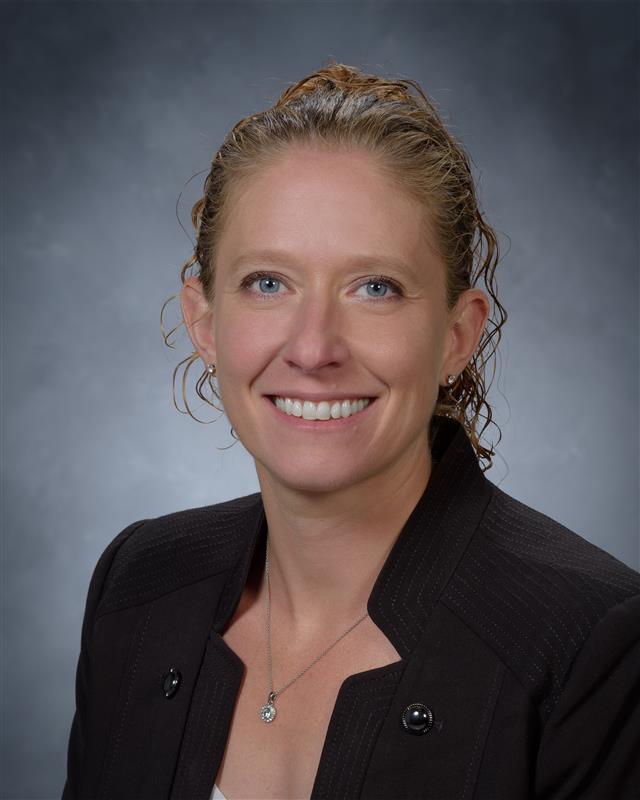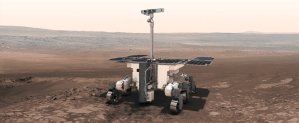September 2024 Transformer of the Month: Lori Arnett
Lori Arnett approaches her work at NASA with a simple motto: think big, start small, act fast. As the Associate Director for Digital Transformation for the Aerosciences Evaluation and Test Capabilities (AETC) within the Aeronautics Research Mission Directorate (ARMD), she helps manage the capability portfolio for wind tunnels across the agency. In this role and […]

4 min read
Preparations for Next Moonwalk Simulations Underway (and Underwater)

Lori Arnett approaches her work at NASA with a simple motto: think big, start small, act fast. As the Associate Director for Digital Transformation for the Aerosciences Evaluation and Test Capabilities (AETC) within the Aeronautics Research Mission Directorate (ARMD), she helps manage the capability portfolio for wind tunnels across the agency. In this role and in the many ways she champions digital transformation at NASA, she is unapologetic about the ambitious mindset she brings to the table. “I know that I have a lot of passion around the work I do, and that can sometimes be seen as intimidating to others,” she says. “But I’m going to drive to something. I want to make progress.”
Lori’s approach to achieving big goals and true transformation at NASA begins with small, quantifiable steps. With this strategy, she has significantly impacted the agency’s ability to deliver on its aerospace missions. In response to AETC releasing its strategic plan in June 2022, Lori and her team created a data governance board and strategy for quantifying and measuring success, positioning her mission directorate to achieve its goals on schedule.
Her team successfully defined and captured data on customer data and service quality, reliability, timeliness, and other attributes for operational and maintenance costs for the wind tunnels to create a quantifiable performance metric. To complement performance, they also defined and captured data on the tunnels’ mission relevancy, future demand, test usage, adaptability, and uniqueness for a quantifiable value metric. Together, these metrics create a real-time view of progress toward agency goals for everyone from headquarters program managers to customers to wind tunnel operators. Other NASA capability portfolios have copied the construct, further demonstrating its value.
By making various data available with access controls, Lori and her team drive toward agency-wide transparency and standardization. They created the first-ever integrated view of availability and access data for NASA’s wind tunnels and increased data discoverability by expanding the ARMD Test Data Portal to include ground test data in addition to flight data. Her team is currently working to bring ground and flight test data together with computational data sets—a feat that would provide unprecedented data integration and interoperability in enabling future missions.
To achieve such quick turnaround with minimal budgeting needs, the team partnered with the Office of the Chief Information Officer (OCIO) to leverage existing enterprise-wide services when building the data application ADAPT (AETC Data & Analytics Portfolio Transformation). “I’m all about leveraging and collaborating. I don’t want to reinvent the wheel,” says Lori. Her act-fast mentality drives her toward interoperable architectures, common tools, and inclusive teaming, leveraging existing solutions to help her directorate achieve increasingly complex missions. In return, Lori embraces any opportunity to share her work and enable other teams in their digital transformation journeys. “If anything I do can help somebody else, please reuse it. I don’t do this only for my organization. I’m doing this for the greater good of NASA and for this nation.”
Lori believes that NASA’s ability to drive innovation hinges on how the agency maximizes the impact of its data, specifically in achieving FAIRUST principles. By 2032, AETC strives for 100% of its strategic data assets to be FAIRUST (Findable, Accessible, Interoperable, Reusable, Understandable, Secure, and Trustworthy). The strategic plan also outlines requirements for a 50% return on investment; to achieve this, Lori and her team developed a construct for quantifying ROI that they shared with multiple other teams, including the Digital Transformation Working Group. By creating ways of defining performance and value, Lori drives strategic investments and data-informed business outcomes.
Her motivation for delivering quantifiable value stems from her years of experience in the aerospace industry. Growing up in the suburbs of Cleveland, Ohio not far from Glenn Research Center (GRC), Lori knew she wanted to become an aerospace engineer from a young age. She went on to receive an undergraduate degree in aerospace engineering and a master’s in mechanical engineering from Case Western Reserve University. Prior to joining NASA as a test engineer at GRC in 2007 and a civil servant in 2010, she worked for ten years designing aerospace products and technologies. Her background influences her commitment to freeing up time for the working level through digital transformation solutions.
When asked what she enjoys most about working with Digital Transformation, Lori says, “For me, it’s all about sharing and collaborating so we can innovate for the benefit of all.” She recognizes that large-scale transformation requires many smaller parts contributing their diverse skillsets to the common goal. Of her various responsibilities and achievements, this is what excites and motivates her to continue impacting the agency as a digital transformer. “I just love collaborating with others that have this same mindset.”
Share
Details
Related Terms
What's Your Reaction?



















.jpg?#)






































